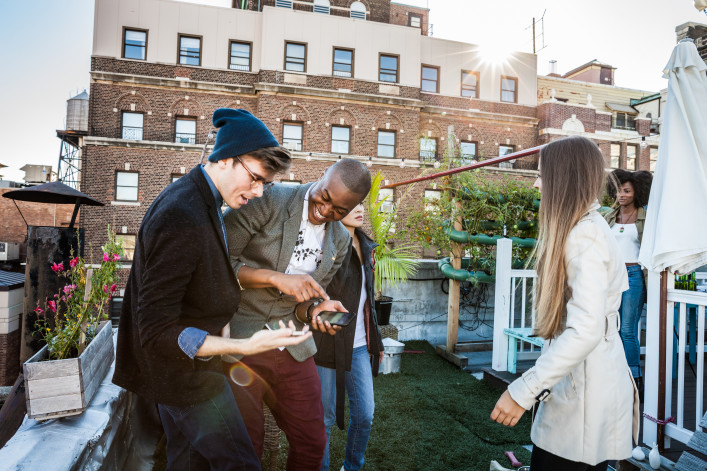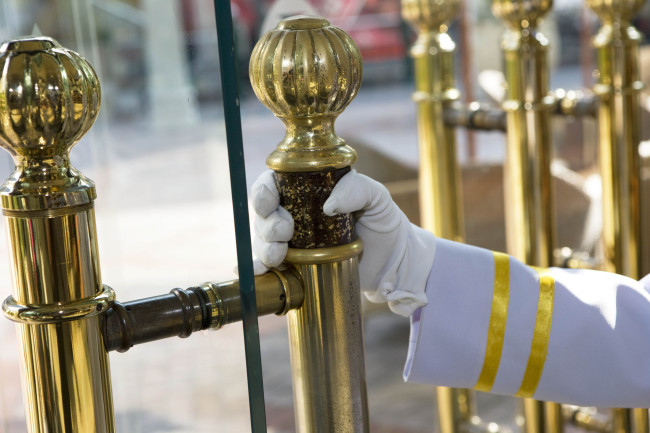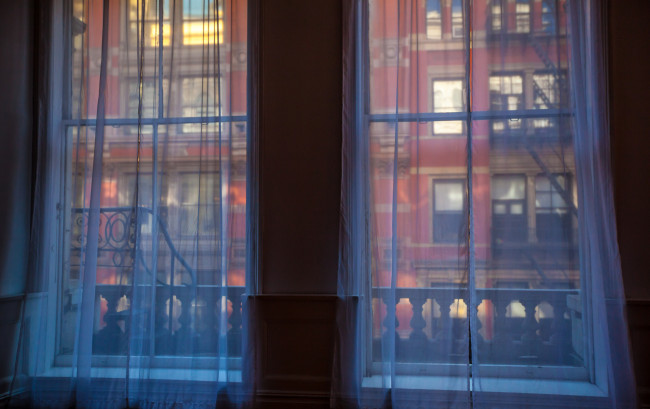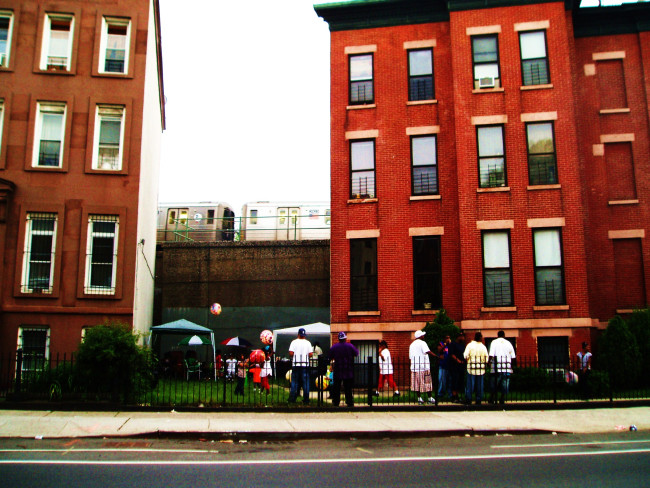Community oriented? Here's how to find a friendly apartment building in NYC

Amenities like rooftop decks can help to foster a sense of community in New York City apartment buildings.
For many New Yorkers, blending in and being just another face in the crowd is massively appealing. But that level of anonymity may become uncomfortable when it extends to the people standing beside you in your building's elevator, or living in the apartment across the hall.
Lately, some New York developers are working to shake off the city's un-neighborly rep, with residential buildings that are overtly designed to foster a sense of community among residents. Take 125 Greenwich St., a new condo development where the top three floors are dedicated to shared amenities rather than penthouses, so that all the owners can enjoy the same views and get to know each other at the gym, pool, and spa.
There's also Hub, a new 55-story rental tower in Downtown Brooklyn, which has made socializing central to its promotional materials. The building is described as "designed to create a true community for its residents," with a calendar full of events such as cooking demos, book club meetings, game nights, and bagel brunches in its club lounge.
Taking community-building a step further, WeWork offshoot WeLive boasts the services of a "community concierge," daily events, and an app for residents to communicate with each other in its downtown rental building.
On the more organic side of things, there are buildings where neighbors get together for the occasional barbecue or rooftop party or where the doorman knows your dog's name, without all the developer bells and whistles. These buildings are tight-knit not because someone decided they should be in a marketing meeting, but because over time the residents have gelled into a community. For would-be renters and buyers in search of that special feeling, here are some surefire signs that the building you're considering is a friendly one.
Community amenities
Whether you're renting or buying, one factor to consider is whether a building has amenities designed to foster social interaction. Keep an eye out for shared outdoor spaces and lounges. Children's playrooms and dog runs can also offer prime opportunities to meet other parents (and pet owners).
When you're vetting the building, find out how such spaces are being used. Ronita Kalra, a broker with Douglas Elliman, points to condos like the Parc Vendome, which has a garden where residents can see live music performances, and 30 Lincoln Plaza, which hosts a private rooftop barbecue at the beginning of every summer.
"The amenities they offer [are] a clear indicator they want to create a sense of community for residents," Kalra says. "In a big building that only has laundry, you're not going be able to interact with neighbors all that much. A roof deck, gym, pool, and playroom are where people will hang out."
Dex Lipovic, a broker with CORE, says that amenities play a major role in making his building, the condo complex The Sheffield, a particularly friendly place.
"We have parties, barbecues for kids, a Halloween party every year in the rooftop space," he says. "The amenities are unlike anything in this area. Other buildings have penthouses up there, but here there are two lounges, a full fitness center, a kids' daycare center, a grill deck, tanning deck, and pool."
Lipovic says the lounge is such an appealing space that he's rented it out to host parties.
"The views are insane," he says. "For me, it's going to be much cooler than going to a bar."
Building staff and neighbors who get involved
Beyond amenities, Steve Snider, a broker with CORE, says the way building staff are incorporated into the life of the building is a telltale sign of how friendly the space is.
"If you see the super upstairs on the roof deck at a barbecue, that goes a long way," he says. "Or if the doorman is affectionate and friendly with kids. I don't care what the building is—if you see that, I want to be there."
The building where he lives is a very neighborly one, Snider says, where kids set up lemonade stands in the lobby and have birthday parties on the roof. One stay-at-home-dad even has a side gig walking neighbors' dogs.
"It's more of an attitude than anything," Snider says. "When you see that the doorman knows people's names, rather than just sits there reading a newspaper, and people greet each other, that's a good sign."
This attitude is something to look out for when you're assessing a potential apartment. Beyond noting the amenities, Lipovic says, potential residents should talk to people in the building.
"I almost always spark up conversation with people in the elevator or lobby, and ask them how they like living in the building," he says. "It gives the buyer more confidence."
Investing in the neighborhood
Don't forget to branch out and consider the wider community outside a building's doors. One metric for gauging your potential neighbors' friendliness is to see if they belong to a tenant or block association, groups of locals who come together to strengthen and advocate for themselves, and beautify a building, block, and possibly beyond. You can find out if the property you're vetting belongs to a block association by contacting the local community board.
And if you want to get really granular, you can explore NYC Open Data for indicators of a neighborhood's sociability, through factors such as block party permits, farmers markets, and other cultural institutions.
You Might Also Like































